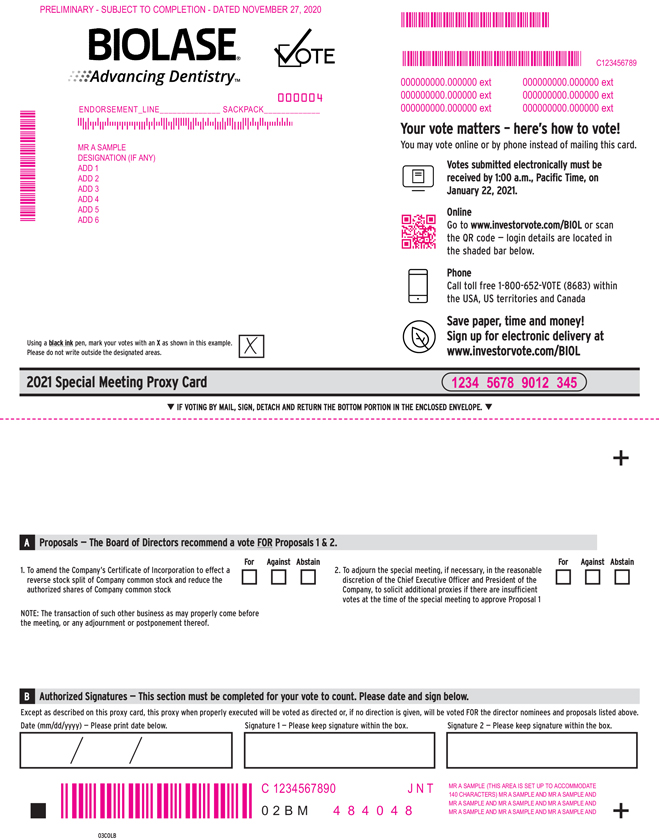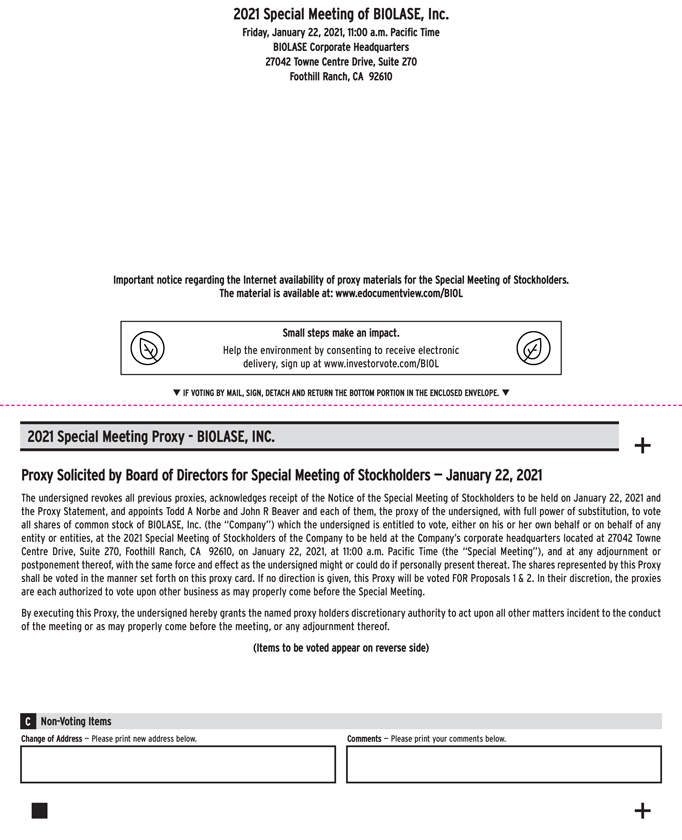Nasdaq Capital Market requires, among other things, that our common stock maintain a minimum bid price of $1.00 per share.
On December 3, 2019, we received notice from Nasdaq that our common stock had failed to maintain Nasdaq’s minimum bid price requirement of $1.00 per share. Our original deadline for compliance with the minimum bid price requirement was June 1, 2020. Subsequently, on April 16, 2020, Nasdaq filed an immediately effective rule change with the SEC to toll the compliance periods for bid price requirement until July 1, 2020. As a result, since the Company had 45 calendar days remaining in its bid price compliance period as of April 16, 2020, upon reinstatement of the bid price requirement, the Company was provided 45 calendar days from July 1, 2020, or until August 14, 2020, to regain compliance. On August 17, 2020, Nasdaq granted us a 180-day extension period to achieve compliance with the minimum bid price requirement, extending the deadline to February 16, 2021 and indicating that if the Company intends to effectuate a reverse stock split in order to regain compliance, it must be completed by such date. Our Board is seeking stockholder approval for the authority to effectuate the reverse stock split as a means of increasing the share price of our common stock at or above $1.00 per share in order to avoid further action by Nasdaq, in the event we are not able to satisfy the minimum bid price requirement in adequate time before the deadline. We expect that the reverse stock split would increase the bid price per share of our common stock above the $1.00 per share minimum price, thereby satisfying this listing requirement. However, there can be no assurance that the reverse stock split would have that effect, initially or in the future, or that it would enable us to maintain the listing of our common stock on the Nasdaq Capital Market. We are not aware of any present efforts by anyone to accumulate our common stock, and the proposed reverse stock split is not intended to be an anti-takeover device.
In addition, we believe that the low per-share market price of our common stock impairs its marketability to, and acceptance by, institutional investors and other members of the investing public and creates a negative impression of the Company. Theoretically, decreasing the number of shares of our common stock outstanding should not, by itself, affect the marketability of the shares, the type of investor who would be interested in acquiring them or our reputation in the financial community. In practice, however, many investors, brokerage firms and market makers consider low-priced stocks as unduly speculative in nature and, as a matter of policy, avoid investment and trading in such stocks. Moreover, the analysts at many brokerage firms do not monitor the trading activity or otherwise provide coverage of lower-priced stocks. The presence of these factors may be adversely affecting, and may continue to adversely affect, not only the price of our common stock but also its trading liquidity. In addition, these factors may affect our ability to raise additional capital through the sale of our common stock.
We also believe that a higher stock price could help us attract and retain employees and other service providers. We believe that some potential employees and service providers are less likely to work for a company with a low stock price, regardless of the size of the company’s market capitalization. If the reverse stock split successfully increases the per-share price of our common stock, we believe this increase would enhance our ability to attract and retain employees and service providers.
We hope that the decrease in the number of shares of our outstanding common stock because of the reverse stock split, and the anticipated increase in the price per share, would possibly promote greater liquidity for our stockholders with respect to their shares. However, liquidity may be adversely affected by the reduced number of shares that would be outstanding if the reverse stock split is effected, particularly if the price per share of our common stock begins a declining trend after the reverse stock split is effectuated.
There can be no assurance that the reverse stock split would achieve any of the desired results. There also can be no assurance that the price per share of our common stock immediately after the reverse stock split would increase proportionately with the reverse stock split, or that any increase would be sustained for any period of time.
If our stockholders do not approve the reverse stock split proposal and our stock price does not otherwise increase to greater than $1.00 per share for at least ten consecutive trading days before February 16, 2021, we
7


